Welcome everyone to Wednesday Nite @ The Lab. I’m Tom Zinnen, I work here at the UW-Madison Biotechnology Center, I also work for UW-Extension, Cooperative Extension, and on behalf of those folks and our other co-organizers Wisconsin Public Television, Wisconsin Public Radio, the Wisconsin Alumni Association, and the UW-Madison Science Alliance. Thanks again for coming to Wednesday Nite @ the Lab. We do this every Wednesday night, 50 times a year. Tonight it’s my pleasure to get to introduce to you Ted Simpson, he’s with the Wisconsin Maple Syrup Producers Association, he was born in Rice Lake, and as he explained to me, he wasn’t born actually in the lake, but– (laughter) That was his joke. (Ted murmurs) It’s good. He went to Bruce High School up in Rusk County, and then studied math and computer science at UW-River Falls. Then got a Master’s Degree in Education at UW-Stout and he taught at UW Baron in Computer Science and wrote several textbooks in engineering and computer science. The reason he’s here tonight though, is that his family, particularly his grandfather started sugaring in the 1920s, I think this is going to be one of the more interesting and tasty, perhaps tasteful talks we’ve had in a long time. I look forward to hearing what Ted has to tell us about the sweet story of Wisconsin maple syrup production. Please join me in welcoming Ted Simpson to Wednesday Nite @ the Lab. (audience claps)
– Didn’t want to turn it on too early that you would hear all my swallowing, ah. So as Tom explained, I’d been making maple syrup ever since I can remember, at my family’s farm. Currently my brother and I own Rocky Ridge Sugar Bush, started by our grandfather in the 1920s. It’s located out of Rice Lake, Wisconsin. There’s Rice lake, and Highway C. It goes up into the Blue Hills, so we’re up in the hills there out of Rice Lake and my brother does a lot of the operation now, but I’m still involved, and we have a little website. If you have any point you like to check out some of our little videos and things we put out there. But really, the start of the show, well maybe Tom. (laughter) But I think it’s the amazing maple tree, acer saccharum. There’s like 148 varieties of this tree throughout the world and interesting that the saccharum family also includes sugar canes.
So maybe it’s not surprising that sugar comes from these trees as well. It has a very unique sap-flow developed mechanism. A tree like the one shown in the picture here is uncommon to have like 20 gallons of sap from this tree and it can vary a lot by season. They live up to 400 years, and we haven’t noticed any real decline in their life as a result of tapping them, so that doesn’t seem to affect them, they’ve had them in Vermont. They’ve tapped them for hundreds of years, and they’re still tapping them. They have a height of around 120 feet, and they can get a tremendous crown, that’s why they call them sometimes a sugar bush because a tree will bush out, if it’s in the open, and all those leaves of course, are all, you know, carbohydrate generators, right, so the more bushy leaves we have the more sap production capability that tree has. You can see that one, is a real bushy big maple in the picture. They live as little saplings down on the forest floor for years, when you can see the oaks, the ash, the popple. But eventually those trees fall, or get blown down or cut down and then these maples come up and become the predominant tree of the forest as well as the white pine.
Well, there’s 140 something varieties of maple. We’re really interested in just a few maple trees that are actually used in commercial production. The sugar, or hard maple, sometimes very similar relative of it is a black maple, and these have the best sugar content and the most quantity of sap. And they’re a hard wood. Often times when you see furniture made of maple, often times it’s the hard maple that it’s made from, cause it’s a hard durable wood. When we cook that sap it tends to create a lighter more delicately-flavored syrup. We don’t have as many black maple in Wisconsin. They tend to be a little bit further south and to the west, some. The red maple, also quite common in many of our forests, but it has some less sugar content in the sap, being around two percent, let’s say, and it typically has less reliable sap flow with a smaller volume.
So, while a lot of sugar producers tap red maple, it’s not the preferred tree. But if it’s there and it’s handy, I’ll hang a pail on it, or hook a tube on it. We’ve gotta be careful though, because they tend to bud earlier, and once the buds come out then you don’t get a good flavored maple syrup. It’s called buddy syrup. So if you have a lot red maples in your sugar bush, you’ve gotta be careful that you don’t take that sap after the buds have matured, or they’ll off– It’ll taint your syrup flavor. Silver maple, very similar to red, you’re more likely to find those in town and as shade trees and so forth, you probably have them in your yard. I know we’ve got some in our yard because they grow fast and they have a nice top. Interesting the box elder tree can also be used ’cause it’s actually a relative of the maple, and you can make box elder syrup. But it’s not really maple syrup, a whole different kind of flavor and it tends to be darker, and again, the sap is not as sweet.
One of the challenges we have is identifying the maples, especially in the winter when there’s no leaves. I mean when you can see the leaf, you’re pretty familiar with what the maple leaf looks like. But what about when we’re out here tapping we’ve gotta go by the bark. The hard maple has a rougher scalier bark, and the top, you know, tends to be a little more delicate in terms of its limbs. The soft maples and red maples and silver maples tend to have more of a smooth bark. Sometimes they actually peel some because they grow quite fast. So, it’s a little bit of a challenge at first but you get to know your trees kind of like recognizing people. And at first, you know, beginning sugar makers it’s not uncommon for them to think well, this tree hasn’t run any sap what’s wrong? And, you come to me, well that’s an oak tree, no wonder it’s not running any sap. You know, it’s an ash tree.
It’s not a maple tree at all. Sometimes they can fool you, but you get to know your trees. The hard maple, particularly has this range, Northeast U.S. and southern Canada, Quebec and Ontario, principally. You can see we’re located out here near the western end, up here in Minnesota is kinda the– oops, I wasn’t supposed to that– They were gonna tape this thing shut so I couldn’t– But, okay, and it goes down to Iowa, and then into Missouri. So, the maple, that’s the maple belt, that’s where we make the maple syrup, for the most part. They like a variety of soils, clay, loam, sandy, rocky soils are all good, but, the maple does better if the soil is loose and not compacted. So you don’t want a like pasture a sugar bush, although that used to be done. Because it packs down that top soil, and most of the maple roots are near the top. So that really affects the amount of moisture and nutrients a tree can get.
The maple likes well-drained soils for the most part and they can tolerate moderate drought. The soft maples, like the silver and the red, can handle more water and they can have their feet wet. But the hard maple doesn’t like to have wet feet. So if it’s in a swampy area, it probably isn’t gonna do very well. And they have poor salt tolerance. So, having a maple tree along the highway where they do a lot of salting, is not going to be probably as good for it. Okay, now we’ve told you about the tree. So, what is maple syrup then? Well for many people, probably not Wisconsinites so much, but for many people it’s a sweet golden brown sweetener we put on pancakes, waffles, and French toast. However, many people are mistaken in terms of thinking that flavor they get out of the other syrups is maple.
It’s actually a fake maple, or like maple-ing or some other artificial flavor. It’s not the real thing. So, and pure maple syrup, the flavor is derived basically by cooking that sap. And during that heating and cooking process is where the flavor is generated. Maple sap is a really product in itself because it’s a natural mixture of sugars of course, water, it has minerals, and a whole organic brew of amino acids and other compounds. And when you cook that, those things combine to create that flavor, and that flavor will change a little bit from sugar bush to sugar bush as well as throughout the year. We’ll talk some more about that. And of course, little warning to beware of what we call the fake maple syrups, because one of the things that our association is trying to do is work with the international associations to make sure labeling is correct. So that these big companies aren’t putting something like maple, or have a picture of somebody collecting sap, and there’s nothing maple in it.
So we’re trying to get that outta there. So, maple syrup’s flavor then, comes from this cooking process, and part of this is the minerals and so forth from the soil. The terroir the French call it in terms of a wine vineyard, and it’s like with maple, so depending on where the maple tree is growing, it’ll have a slightly different flavor to the maple syrup. And it also varies by season, and even by year. Depending on the season that we’re having, our flavor will be just a little bit different. If you were just to take the water out of the sap, didn’t cook it, you’d have a very sweet clear liquid, but you wouldn’t recognize it as maple syrup. So we gotta cook that to make that flavor. And speaking of flavor, today we have a new grading system, and if you’re used to buying maple syrup you might wonder why they changed the name of it. Used to be called “light amber,” now it’s called “golden.” Used to be called “Grade B,” now it’s called “very dark.” So, this is the new international grading system that’s being used throughout the U.S. and Canada today.
Prior to the states and Canada might use different names, but they wanted to grade everything, have a common name, so they finally came up with this. Golden is your real light. It has greater than 75% light transmittance. And you’ll see some of the products up here are that way. Amber is a rich, little bit darker of syrup. It has more of a smooth, caramelized flavor. “Dark” we call it robust, I call it the bock of maple. So it has that stronger flavor, lot of people really like that. When we have people sample syrup at our booth at the fair, or wherever, we find that half or more of the people like the dark flavor as compared to that really light delicate flavor, sweet flavor.
Then we have the very dark, which is our Grade B, traditionally used more for cooking and baking and flavoring foods. Here you see some examples of the different grades. Lighter grades typically come earlier in the season. It has to do with the sap chemistry. It isn’t like we’re doing anything different, if we just do the same thing, early in the season we’re gonna get those golden ambers, and later in the season we’re gonna get those darks and eventually very dark, because the little enzymes and microbes are changing the sugar chemistry slightly, and breaking down the sucrose into what we call invert sugars. So here’s one of our favorite questions, is maple syrup healthier? Yes, it is. What do you think I was gonna say. I didn’t come here for nothing. (laughter) So according to most studies it is.
But, why is this true? Well according to November 13th, if you have Time magazine, you might have seen the article on how maple is taking over pumpkin spices as one of the upcoming flavors, and they said in there that maple syrup contained over 40 antioxidants along with minerals and other organic compounds, and that’s it’s actually lower in calories than other sweeteners, for the same volume. Actually, our associations say there’s 54 of these compounds been identified in studies done in Canada and by Proctor University in Vermont. But still… Okay, sugar is sugar, isn’t it? I mean, what’s the deal here? Okay, so I got carried away with my little study, I’m not chemist, but I, you know, had a little fun with this. When you get a fruit from a tree or sap from the tree, it’s primarily a sucrose sugar that is coming from that plant organism as it is in the wild, so we then take the apple and eat it. And the sucrose is broken down by our bodies into the fructose and glucose. Glucose is the blood sugar, it’s the energy source that our body needs, and what is absorbed by muscles, and, as I understand it, that’s kind of the sugar. If you’re diabetic you measure your blood sugar, it’s a glucose you’re measuring. The fructose on the other hand is processed differently and it’s not as good for us.
Some people say it creates more fat in the livers, and just generally speaking, fructose is not beneficial to our bodies. Well, so I put the little guy up there. High fructose sugar, which is corn syrup, right. I mean, it’s got a lot of fructose and very little glucose, so when it comes to sugars, then we, we’d rather have more of the glucose sugars, and less of the fructose, and that’s what we get with maple. So the sugar quality is better for our bodies and has all these other neat antioxidants and minerals and organic compounds in it. This, I thought this chart was kind of cool. I’m not gonna go through all this, but look it, something like manganese, 95 in maple syrup, and look at the rest. I mean it just blows everything else outta the water. And then calories, I guess white sugar’s less.
Interestingly enough. I think that’s because of the glucose, but anyway, we actually have less calories. It’s very similar to brown sugar as you can see. Okay, we take this information and the maple syrup industry then is going to use that to help market our products. But before we get into that, who– couple questions that typically come up, who discovered maple syrup? Couple of you guys know that one. How was it used? And where does Wisconsin stand in the production of maple syrup? And a little bit about the roots of Wisconsin’s production. So, as we saw earlier, maple syrup is unique to North America and Canada. No Chinese import options here. They can’t make it over there. They don’t get the weather.
They don’t have the maple trees. Originally this was the main source of sugar for Native Americans, and then of course the pioneers. And as people are learning more, not only do they like the flavor of maple syrup better, but they’re finding out that it’s better for them, we’re seeing an increase in demand, and part of our job in industry is to market this to people so they understand what maple syrup is. So where does Wisconsin rank? First of all you’ve got Camden, Quebec, making like five million, at least five million pounds. Although, there was some kind of hoist, remember reading about that? How maple syrup all of the sudden– They didn’t even know they were missing for a long time. They’ve got so much. They store it up in the tundra in barrels where basically the ground is frozen right, so they keep, syrup keeps indefinitely up there. So when they have good years they store extra syrup there, when they have a poor year, they bring it back out, so that they kind of act as a buffer, which really helps keep the price of maple syrup more stable. Well, in the US, Vermont is first, of course.
You know, they consider themselves the maple, don’t they? Then we have New York state, followed by Maine. And then, when we get past that, guess who comes up. (laughter) (fight song) (laughter) Fourth! I think that’s where we rank in the football standings. (laughter) Okay, whoops, jumped a slide there, but after Wisconsin, we have Ohio, Michigan. Some guys that wear purple to the west of us, and they’re in that group too. So, there’s a lot of other states that make– New Hampshire. So there’s, Michigan. There’s a lot of states that make maple syrup, but Wisconsin, and Wisconsin’s probably one of the fastest growing states in terms of production. So, you know, maybe we can knock out Maine there, one of these places, um, keep working at it. Okay.
(murmurs) Come on guy. Oh, there we go. (soft Native flute music) We’re gonna take it back in time. A long time ago when the Native American tribes were the origin of maple sugar production in our state and in our nation. Sugar maple trees were almost unlimited in the original forests, large maple trees. So, they had a great resource for making the sap. There’s main legends that exist in the Native culture about maple syrup and they used to treat it almost as a sacred item from the tree, from the Earth. The manufacture of sugar was one of the principle Native American industries. The Ojibwe up in the Northern part of the state.
We have the Menominee, over in the east. The Ho-Chunk, all them, all those tribes did a lot of maple. (Native American chanting) In the early days, of course, they didn’t have metal buckets to collect sap in. They had to use birch bark vessels. They cooked it by putting hot stones into 100-gallon birch bark tanks I guess. I wonder how our state inspectors would think of that, (laughter) if I was doing that back in the woods. They probably wouldn’t like it so well. But, they didn’t cook it to syrup, all the way to sugar. So we’re talking here about, maple sugar kind of production because how would you store syrup? They put the sugar into little birch bark containers, and buried in the ground for– And they kept well for future use and for trade.
(bird chirping) There’s my cardinal. (chuckles) Along came the Europeans in the 1600s, and one of the things that really advanced maple was the iron pot to cook the sap in. An observer reported a band of 1500 Menominee Indians made over 90 tons of this stuff. Can you believe it? That was a major operation. 120 pounds of sugar per individual, often used in place of salt for seasoning as well as for sweeteners and it provided energy in lean times. Well, the first Europeans didn’t really discover the use of maple syrup, it was our French voyagers. And they found it was a great source of energy when they were doing portaging. They learned this from the Natives, and they, you know, began to produce maple sugar for that purpose as well. Then long come the American pioneers which used maple syrup as their main source of sweeteners.
(fiddle music) Thomas Jefferson called it a free man’s sugar and considered it an important trade item potential for the US. He is quoted saying, “I will eat no sugar but maple sugar.” That’s the way those folks worked, right? It was all or nothing. He started a maple grove on his Virginia plantation, but the weather wasn’t very conductive there so he never got the production he’d hoped for. (fiddle music) Now settlers moving west come to Wisconsin, they find this great resource of maple trees and things, and of course, they right away put that to use in making syrup for trade and for their own consumptions. I think every little farm and rural area had a maple bush. (music stops) So it was a major source of the sugar. Cane sugar was very expensive, or difficult to get, so they would use this for their sugar as well as trading with the Natives. Most of the sap still is cooked all the way to solid sugars, and even up into 1900, sugar was probably the major produce of the maple sap. Not the syrup that we’re used to today.
It really, syrup started to take off as we had the advent of sealed jars and you could put the syrup in there and seal it and it would keep. It was a source of sugar, we mentioned, for the pioneers. And as a result, we did some biking on the Katy Trail this summer, down in Missouri, and, encountered a few different occurrences of Daniel Boone, which was really interesting to me that he spent the last 20 years of his life there. And, I was reading up some on it, he would make over 300 pounds of sugar each spring. He actually had a little sugar house that he cooked it in. Then he would go up the Missouri on hunting trips. He went all the way up to the Yellowstone and he would use the sugar to trade with the Natives as he went, as well as for their own use. And as we mentioned, Thomas Jefferson looked at it as a potential for U.S. trade. Well, let’s take a look here at the source, as I skipped one slide there which was just, you know, what is maple sap? And well sap starts basically in the leaves.
The leaf is this beginning of this whole process. Because of photosynthesis, it’s taking that light energy along with the carbons and the waters and it’s producing the carbohydrates. The maple tree is kind of unique in that it has little fibrous straw-like, porous transfer material, fibers that can be used to transfer the water into carbohydrates up and down the tree. So this process is happening throughout the summer. And I could tell cause when you see that tree sitting out here, it’s making maple sap. It’s an amazing process, and then as we get towards Fall, the process stops. The chlorophyll, that was the important piece of the green leaf that makes this possible, production is stopped, and the natural color of the leaf is seen. So we have the beautiful reds and the yellows and the oranges. Of course, without the chlorophyll the leaf dies, drops to the ground, tree goes into dormancy, and, you know, conifers kind of wonder what’s going on.
(audience chuckles) So we go through the Winter that way. And then, ahh, Spring! The sun’s out, the day’s longer, we feel the warmth, and things are starting to melt. And these fibers in the maple tree, because they’re hollow, is that we get that frost, and the freezing and thawing, it generates, a vacuum, and these microscopic straws then, move the liquid up the tree, up to 100 feet, up a tree, through this process of the thawing and the expansion of those little fibers. This process is not totally understood. But, they have a lot better handle on it than they used to, and you certainly notice that, as a maple producer, how much difference that frost makes. So, as this water moves up these fibers it picks up the carbohydrates that were stored throughout the Summer, and moves them up into the tree, into the sapwood. The sun activates little microbes and enzymes. These enzymes break these carbohydrates into sucrose sugar essentially, and give off carbon dioxide. And these little microbes are typically active in a temperature range of around 35 to 40, maybe 45 degrees.
If it gets warmer than that, they quit. They don’t work when it’s warm. They don’t work when it’s too cold. So they’re picky, you know. They’ve got their job and they know what they need to do. So, during the right temperature range then, this tree will be like a pop can, with 20 pounds per square inch of pressure in there. So any break in the bark, or a hole that we drill, the sap gets pushed out. If we don’t get that, the right conditions, if it never gets the right temperature during the day, or gets too warm, or doesn’t get warm enough, or it doesn’t freeze at night, and all those kinds of things make a difference in whether we get a sap run. You can put a bicycle tire pressure pump in the sap hole and check the pressure in the tree.
And if it’s like under 20, 15-18 pounds, you won’t have much sap run that day, but if it starts getting up there, then, (whoosh) they’ll take off. Here we see a little sap run, and the maple sap looks pretty much just like water. (bird chirping) There’s my cardinal. So, you can see it’s running pretty good there. They can run 150 little drops a minute without much trouble. And if this runs throughout the night it’ll fill your pail up. You’ll have a full pail of sap by the end of the day or into the night. Course here, we’re poking a tube on it. This sap is really quite tasty.
I don’t know if you wanna drink a ton of it, it may have some other effects on you, but uh, (laughter) maybe get ready for a colonoscopy. (laughter) So, because it has so many beneficial effects, it’s really equated to like maple water. Or excuse me, coconut water. And we call this maple water, after that, and I think one of the, probably, up and coming products, and I don’t have it on the table here today, is maple water. Anybody seen that in store? Keep an eye peeled, in the next year or two, as right now, we’re in the process in the industry of setting up guidelines and standards so that maple water will, you know, what is maple water? We wanna make sure everybody’s labeling it the same. But, so this is something I think you’re gonna start seeing in the near future, because studies have shown that people prefer, it’s much more palatable than like coconut water, and contains many of the same healthful kinds of nutrients. So we’ll see. Okay, how often then, and when does sap runs occur? Well, really, sap can run anytime there’s no leaves or buds on the tree. We can have a sap run tomorrow.
We can have it in January under a certain thawing condition, or February, just about any month, but typically in those months you won’t get much sap. And it’s really not worth the effort to try to collect it and to tap your trees and so forth. Under a really strange year you might get a little sap run. But the best sap runs in Wisconsin occur in March into April. We’re seeing these run a little bit earlier, the season’s taking in and I think if you looked at a study which would be very interesting to get, it would find that we see the sap runs earlier now than we used to. I know my dad used to make most of the syrup in April, now we’re seeing most of it at the end of March. So on a good year we should get three major sap runs, and these are separated by cold spells typically. Maybe four or five days of cold weather, a snow, it’s just, people are ugh, not again, you know. But if you see a Joe with a smile on his face, probably the sap collector, (laughter) because that means we’re gonna get a new sap run.
And typically we have three of those if we have a good season. How much sap does it take to make a gallon of maple syrup? I think some of us were talking about that before the show today, and it can vary a lot. There was a researcher and proctor called Professor Jones, back in 1903, developed what’s called the Rule of 86. So if you take the sap test, how much percent sugars in the sap divided in 86, you’ll get how many gallons it’s gonna take to make a gallon of syrup. So if you have two percent sugar, it’d take 43 gallons. Typically hard maples will be two and half to three percent. Maybe sometimes, depending on the year, we may be down around two, and again, soft maples will be some less. So if you had three percent sap, you’re getting closer to 30, 35 gallons of sap per gallon of syrup. Can you make your own syrup? And has anybody made their own syrup? Anybody raise their hand? A couple people have made your own syrup.
Great, you just need a couple maples in a yard, and maybe some kind of a little tapping kit. And you can buy the tapping kits at any farm supply store a lot times, Fleet Farm, Farm and Fleet. Some of these places will have these little tapping kits. Often they come with a few little bags and some spouts that you can tap in and a drill bit. So with an electric drill, and some of these spouts and a few bags, you’re ready to go, you’re collecting sap. If nothing else you could drink it, you know. But you probably wanna cook it. I know one guy’s collecting, making wine with it, and beer, you know, ’cause he uses that in place of water as wine and beer and it’s very tasty. So, a typical tree, probably can get 10-20 gallons of sap during the year.
So if you had a few trees, you’d make yourself a gallon of syrup. Whoops. Got carried away there. One way to cook it is in a turkey cooker. Or in a little flat pan over a fire. If you’re doing that though it’s better to take one batch of sap and cook it down till it gets close as– so it doesn’t burn, but cook it down as far as you can, save it, take another batch, cook it down and combine the two, and cook them down to syrup. If you just keep adding fresh sap what you’re doing is recooking those sugar molecules over and over again, and you start losing some of the flavor. You could finish in the house but be careful because if you have too much steam in the house, something will happen to your plaster or whatever. (laughter) Spouse may not like that.
You can use a candy thermometer. Take our sap to 7.5 degrees above the boiling point of water, so it’s around 219, 220 degrees, you should be able to then take it off and put it in a bottle and seal it. If you do that when it’s good and hot, it’ll keep indefinitely. So, what I wanna do next is talk about some of the steps. So you can do this yourself, or you can have somebody else do it and appreciate their efforts. But there’s really four steps in the process. It starts with tapping the trees. Now, this means you gotta find the right trees to tap. And our little fellow here on the left, somehow wasn’t looking up and tapped telephone poles.
Didn’t get anything out of ’em. And I, this is kind of dumb, but I’ve done this in the woods, go tap this tree, I’m tapping, and then come back. Jeez there’s no top on that too, that thing’s dead. No wonder it didn’t run any sap, you know. So anyway, look at the tree tops, make sure it’s a healthy tree, find good wood, rotate the tap holes, and you’ll get used to identifying maple trees. They kind of all look the same when you get started but later you find that they, they have, you know, you recognize them easily. Usually we put one tap in, but if it’s a big tree over 15 inches, you could probably put a couple taps in it. When would you tap? We mentioned probably early mid-March, depends on your location and each year can be a little bit different. This last year, we sort of missed some of the boat because we should have tapped in February, up there in Rice Lake area.
But we typically don’t have any luck tapping in February so we decided to wait ’til March. Then we missed the first sap run. So, you wanna make sure you get good wood, good wood is big, you know, if you just tap an old tap or something, you’re not gonna get much. Rotate the tap holes around the tree. Even though it’s typically good to tap, a lot of people like to tap on the southeast side of the tree because it warms up quicker in the spring. But, studies have shown doesn’t really matter. But the main thing that matters is having a good tap, a good solid wood, and electric drills, (chuckles) has that been a life saver. I can barely remember the old brace and bit. My grandfather used it and my dad.
Then we got a chainsaw with a drill on the end, he had to lug this thing around, you know, and now of course, electric drills, a couple batteries, you just get it done quick. The spiles have changed from big 7/16th inch, large spiles, I’ve got some up here you can come look at later, the 5/16ths today is very common and they make little bitty 1/8th inch tap spiles that you can put in small trees. So you can tap today a small tree, by just drilling a small hole in it. You don’t have to put a great big old hole in there. We’ve also found that one of the things that really ages a sap hole is when you tap, put a spout in there that’s not clean, ’cause all kind of little microbes and stuff on there and those grow in the sap, and they close the hole up. New spiles can increase 10%, so a lot of people are buying new plastic spiles every year and increasing production. We mentioned rotating the tap holes. Here you can see the tap. We have a slight angle, and when you tap that spile, you want to be careful, don’t give it a big whack, you’ll crack the wood.
Tap, tap, tap, tap, get it in nice and gentle, make sure it’s in solid or it’ll fall out. That’s disappointing if you have your bucket on the ground. Okay, we’ve got our trees tapped. We’re ready to collect. It depends on your collection, how you tapped them. In the old days, you had one choice, the size of your sap bucket. A lot of people had little one gallon, 10-quart buckets. Of course they would run over right away and you’d lose a lot of sap. So, trees can run three to four gallons of sap in just several hours, so you want to make sure you have a large enough bucket or you’re right on top of it to collect it when it fills up.
The collection of buckets is rather labor intensive, going around and picking these things up and lugging around through the deep snow. It’s not for us older guys. Also, with buckets, you gotta take them out, then the covers out, pick them up, wash them. It’s a lot of overhead. They say one man can gather 500 buckets a day. Seen some of these operations have eight or 10 thousand trees. Think of the team you’d have to have out there to collect all that. So, buckets are good if you have small operations. The other problem with buckets is, you have to get into the woods with equipment, four wheelers, tractors, something that compresses the soil.
Bags, they’re easier to take out. You can put a whole sled full in there and take them out. My brother’s kind of ingenious and he drilled a hole in these PVC pipes and then put a bag on with a hose clamp, and these work pretty slick. And the bags only cost us a 10, 15, 20 cents apiece. The problem is dumping the bags can be a little tricky because you got this big gelatinous bag and you’re trying to put it into your pail, and it’s easy to spill it. So, along came sap tubing. Advantages, reduces labor in collecting the sap. Increases the sap flow, especially if you put a vacuum on and you sucked the sap off the buggers. By gosh, we’re gonna get our sap one way or the other.
And if the tree can’t generate enough pressure then I’ll suck it out by creating a vacuum on the sap hole. It’s much faster to tap these trees because you got the spout and everything sitting right there, you come up, put the thing in, tap, walk to the next one, same thing. And you don’t have to worry about felling your maples, because the sap lines are running right by the maples. You can get people that don’t know a maple from an oak and they can still drill a hole in there and put the tap hole in. Just make sure they don’t goof the tree up by drilling too deep, they should know what they’re doing. The disadvantage is, of course, the cost of setting up these tubing systems. More difficult to move around the woods. You’ve got to be on top of tubings. There’s things called squirrels out there, rodents, bears, all kind of stuff, deer, they knock it down, limbs fall on it.
You gotta be out walking your tubing lines. There’s two types of tubing systems we see today. The one you see in the pictures here are conventional ones that has mainlines that we run the mainline through the woods. It’s this thicker pipe, and then we connect onto the mainline the laterals, and then the lateral runs up, you can hook maybe seven or eight trees onto the lateral line. Quite a bit of setup to get this all together. But once you’ve got it, you’re a happy guy. Bears are big troubles. We’ve had them chew holes in mainlines. They decide to suck the sap out.
They tend to round up the laterals and put them in piles, and I don’t they’re up to. I guess they got nothing better to do. Interesting, they’re working in the woods. A new type of tap, this is kind of a recent development. This much thinner line is called 3/16ths, and you don’t use mainline with this, you just run this down the hill. You can run up to 30 or 40 trees onto one of these, and because it’s thin, as the sap comes in here, it creates vacuum by the hill. You can get over 20 inches of vacuum at the top of a 50 or 60 foot hill just by the weight of the sap. You don’t need to put in vacuum pumps and things, and this is great for small operations that have hills and trees they want to tap that way. If you want to, you could take all that down, I suppose if you had a small operation, you wouldn’t have to leave it up all year.
We can create hybrids, here’s one. We’ve got 3/16ths in this woods here running down the hill and getting around 20 inches of vacuum. Okay. However we did it, we’ve got sap at the cook house. We either lugged it in, pumped it in, it ran in, somehow it got here and it’s sitting in a tank by our cooker. Now we gotta make our syrup, and let’s take a look at this process. Conventionally, what we did was boil the hell out of it, just boil and cook and cook and cook. The bigger your cooker, the better. In our sugar bush, we have two 16-foot long by 5-foot wide evaporators, they burn wood like you wouldn’t believe, you’d think you’re running a steam engine.
And here I am stoking up one of the evaporators, cooking both rigs. But you burn a lot of wood and, you know, you don’t get as much syrup at the end of the day as we’d like. So there’s many changes in the process. Let’s take a look at some different operations here. What’s going on with this guy. (Host is fiddling with computer.) Come on, wake up. Oh, there we go. It went like mad. You can buy little, bitty evaporators like this.
I was talking to one of the producers up here at Cadott he said, he was amazed at how much the hobby market has grown. So, people cook their sap inside a turkey cooker. Here’s a big evaporator, it’s called Continuous Flow because, you see, the sap comes in the back and there’s little flues that drop into that firebox, which really increases the surface area, and the sap starts in the back and just kind of works its way forward as new sap comes in, so that by the time you get over to the other edge, you’ve got very rich, almost maple syrup. And we’ll usually take the temperature, when it gets up to the right temperature, we’ll draw it off. Some of the changes have been going on with the evaporators. Fuel Oil is one of the first big changes. People started using fuel oil instead of wood. That’s kind of expensive, but then again, it costs time and money to make firewood. So it really isn’t as bad as it may seem.
Better efficient flue pans, steam-aways. Look at this rig down here. It’s got big steam-away pans so the steam comes up and actually reheats and boils sap so that we get the most out of our wood calories. But probably the biggest thing today is this guy, Reverse Osmosis. Raw sap is pumped under high pressure into a membrane. Then the water molecules go through the membrane, but not the sugar, and minerals and those kinds of things stay out so we concentrate the sap by squeezing the water out of it. ROs can take over 80% of the water out of your sap. And you can get from 3% sugar to, like, 18% sugar coming into your evaporator on some of the newer ROs. There’s many different sizes.
There’s little hobby ROs for people that maybe have 100 or 200 taps, and there’s gigantic ones for people that have 10,000 taps. One of the things that we see changing is how the ratio between the evaporator size and the RO size. Today, it pays to have a great big RO take most of the water out and a small evaporator to cook it enough to get the flavor and the color, and then you can process it. One of the researches that we’re studying is, how does this high concentrate sap effect the flavor of maple syrup? Are we getting some of the same flavors from the syrup that we did when we cooked it right from scratch? And, you know, I think some people are on both sides of the fence here. So anyway, that’s something that the industry is concerned about and studying. How do we know when the syrup’s done? Well, you can thermometer, about 220 degrees, and I’m using kind of what we have at our elevation and stuff, this will change depending on atmospheric pressure, and again, how high you are and what you’re cooking, which of course, affects the atmospheric pressure, doesn’t it? If you want to go all the way sugar, take it to 241 on your candy thermometer. Then take it out, once it gets to 241 degrees, you can beat it, get the crystals to form, pour it out into molds or onto a dish. So, if you want to make your own maple sugar at home, take a cup of maple syrup in a little pan and cook it up to that 241 degrees and stir it up, and you’ll be able to pour it out and make maple sugar. Hydrometer, as we’ve got right here.
This is a hydrometer, also use this if you’re making beer maybe. And you put your sap in and you float it in there, and when it comes to the red line where it’s maple syrup, you know it’s done. You gotta make sure it’s hot, it should be boiling hot because if it’s cooler it’ll be denser and it’ll flow it higher, so you gotta make sure you’re sampling the hot, like I am right here, sampling the syrup out of the syrup pan and checking to make sure that we have the right density. I’m more high tech as using refractometer, you got to calibrate it for your temperature, but then it is a good way to test your sugar percentage, it’ll tell you. And once you get the 66% sugar, it’s technically maple syrup. We like to go a little bit further, makes it a little thicker and a little better, we feel, but if you go too much, it’ll crystallize, you’ll get little sugar crystals on the bottom of your bottles. If you know maple syrup, this is no problem, but people who don’t say, what’s happened to my maple syrup, there’s little crystals growing on it, and they think it’s something bad, but it’s just that it’s overly cooked a little bit, a little bit too sweet. Okay, fourth step, filter and bottle. Here, we see a filter press, and in the background, you see the finishing pan.
We take it off the evaporator by temperature, we put it in the finishing pan and cook it to the exact density we want, we pump it through a filter press, take out all the sediments, probably all the good stuff, and then we put it into a nice stainless steel barrel like the boys are doing down there. Those guys are all sap gatherers hoping for a sample. Then we should grade the syrup, and Wisconsin is really encouraging, we as an association would like to require people to grade their syrup so when you buy it on the store shelf, you know whether or not you’re buying the same syrup you did, you know, last time you bought it. You can usually tell, if it’s in glass, if it’s darker or lighter, but even then, that doesn’t tell you the flavor sometimes. So, you should grade the syrup, make sure it’s labeled. We put it into a bottling machine. If you’re a small operator, you probably have a little bottling machine like that. You heat it up to 190 degrees, you keep a real close eye on the temperature, because if it drops below 180 and you fill your bottle, it may not, it may get some mold spores in there and it’ll mold on you. You want to keep the temperature up there.
If you seal that syrup in a bottle at around 180 to 190 degrees, it’ll keep for years. I mean, there’s no issues with that. You know, a lot of people, in Wisconsin, we tend to use more glass for bottling our syrup, but a lot of states put more into plastic. And I am a little concerned about longterm storage of syrup in plastic. We think it darkens a little bit. But, you know, studies are still being done. Okay, now let’s get some money. We made the syrup, we’ve been out here working, so how are we gonna sell it? What are the selling options, what are the regulations, and what are some common products? Well, one selling option is to take those barrels you made and take it off to the bulk syrup buyers. Another one is to sell direct from your farm, a farm stand, or maybe sell it online, or optionally through a store.
But if you’re gonna sell through stores, you need a license. That means you need to have an inspection, get the sap, the syrup license before you can sell it in the stores. You can sell limited amount of bulk syrup to the packers. Now, these aren’t Green Bay guys because they don’t buy certain barrels, they buy beer in barrels. (laughing) Anyway, so you sell to a packer. A packer is a person who basically bottles maple syrup and distributes it. We have some large packers in our state, and you can find out packers that are around you by checking our website. Here’s some of our standard products, and I’ve got those on the table here. We’ve got the syrup in nice gift bottles for this time of year.
Different kinds of syrup we’ll talk about, then there’s the maple cream or spread. We can open that there. And then, of course, your sugar candies and all that good stuff. There’s some special products, we’ve got maple mustard, barbecue sauce, cotton candy, I got maple root beer up here, we’ve got flavored syrups, cherries, cranberries, apples, cinnamon sticks. The guys are trying all kinds of stuff. Organic maple syrup is catching on. More and more producers, you have to go through kind of a complex process to get certified organic. I mean all syrup’s organic, but this way, you just get certified. And if you’re shipping syrup into cities and things where people don’t understand the process, maybe that’s a good thing.
Then one of the ones that’s really catching on a little bit on the side market is taking year-old bourbon barrels that have had aged bourbon for 25 years in this barrel, a nice oak, it’s been fired, and they drain the barrel and then you put your maple syrup in there. Let it age for three or four months and then bottle it. Got a really nice flavor, no alcohol, so it isn’t like you’re getting a buzz off this, but it’s just really nice flavored syrup. A lot of things happening in the market. I mentioned earlier that maple is replacing pumpkin spice, and I have evidence of that, because I have some Jelly Belly maple beans. (laughing) So, there, you guys can try some if you want later. Alcoholic beverages– by the way, non-alcoholic beverages are 85% with maple flavoring like the maple root beer there. Then you have the alcoholic, like maple-infused whiskeys, maple-infused vodkas are growing. Microbrews, they’re starting to use maple for making beers.
And I’ve got a nice bottle of maple wine that’s made. So there’s lots of different specialty products and we mentioned maple water coming. That might be, really a big product if that takes off, like it has the potential to. Canada’s been doing a lot of work in marketing maple syrup overseas in Europe and Asia. So, and those markets are growing. What are some concerns for the future? Climate change, the maple belt’s moving north further. We’re not sure how climate change, how fast it happens. How the maple industry may be affected. But it is, we’re noticing our seasons are more random.
We’ll have a really good season and then we’ll have a bad one, a really bad one. And then you’ll have the season happen early like in February and the trees aren’t even hardly ready to run yet and the weather warmed up. Vacuum pumps, vacuum systems, and tubing systems like this are helping a lot, because you don’t need the perfect weather to get a good sap run. So the big producers that are sapping several thousand trees, they can’t afford to have half a crop. They’ll go broke. So with high vacuum, getting over 20 inches of vacuum on the sap lines, it really makes a difference on bad seasons. If it’s a good season the gravity guys gonna make about the same as a vacuum person. But the good seasons happen about once in three or four years. So, the vacuum guys can get pretty consistent seasons every year. It doesn’t really take a lot more sap out of the tree and the biggest change we’ve noticed in some of the research is that the surplus sap of the maple tends to be used for seed production.
So, maples seem to do pretty good with seeds, so probably not hurting them too badly. Another big thing is invasive insects. I think the longhorn Asian beetle is the biggest threat that maple producers encountered in recent history. And it started out in Massachusetts, I think. And they’ve been able to keep it pretty well contained. The good thing about it is that, when these longhorn Asian beetles drill holes in trees and lay their eggs in the young, they pretty much stay in that tree until the tree starts to die. Then they move, and they don’t move long distances. So we can see that a maple tree’s infected, we can get rid of that tree, get rid of the Asian beetles. So if we’re on top of woods, which one thing about maple producers, they’re out in the woods a lot.
They see if their trees aren’t looking good, something’s happening, so I think we’re, so far, hoping to keep that contained, but who knows what’s next. Another thing is regulations. Regulations are, two-edged swords are good, but if we’re over-regulate an industry we can also cause that industry for that state, to be less competitive. So we’re, in our Maple Association, working with the State Agricultural Department to make sure the regulations make sense. Like for example, this last year they thought, the evaporators should be cleaned after every cooking. What, did I hear that, what? Please tell me that again. No, no, you couldn’t clean that great big rig after every cooking. You’d go broke. It costs you all your time, so there’s no need to.
So anyway, the same with reverse osmosis. The regulations for using that equipment. And we need to work with the state. They want to do good and so do we. And education is a lot of that. And that’s where our Association becomes so important to the industry. Wisconsin Maple Syrup Producers Association promotes maple syrup production marketing throughout the state. Our members are all sizes of producers. We have very large producers, several thousand, 10,000 taps and a lot of producers with only 120 taps.
But they– It’s funny, some of the people that know the most about maple are the hobbyists and the people with the small number of taps. They are really on top of it because that’s their passion. It’s their hobby, it’s their interest. We hold annual meetings and conferences. We hosted an international convention at Green Bay in 2006. I’ll be hosting one in La Crosse in 2020. So we’ll have producers from all across the U.S. And Canada here to learn about Wisconsin and our maple syrup and how things are in this part of the country. We work with national organizations.
We let people be a voice to stick up– People say, “Nobody listens to me.” Well be a part of our association, because as a group, we can get attention, we can work through problems. One of the things that we’re big on is getting property tax relief, and we’re, I think, the only two states in the country where if you tap maple trees, not just one or two, but a reasonable number, your property can be treated as forest ag, and you get a lot less tax, and this has caused a lot of people who are land owners to say to the maple producer down the road, hey, come on over here and tap my trees, would you? Because then I can get a tax break. We’re doing a lot of promotion for the public. We have a fall tour, which is open to the public. We did it over in Southwestern Wisconsin this year, it had like 100 people. We went around a couple maple productions. We went to a microbrewery. We had a good time there. And we saw other businesses, cheese factories and things, so we learn about local industry as well as maple production.
We do syrup judging in May, people can bring their samples in, and if their syrup is judged blue ribbon, then they’re able to bid the syrup through our state fair booth. If you come down to Milwaukee, stop by at our state fair booth and see what we’ve got. We maintain websites and work to get grants for education, we’re working right now so that teachers can get packets for their schools so they can show the kids how to tap trees and make some maple syrup. And we’re exploring new marketing methods. One of the things we’re looking at is some billboards around the state. And we’ll show you, I’ve got a lot of publications, maps that show all the producers in the state, which we are putting online, booklets like the “Beginners Guide to How to Make Syrup.” I’ve got these here for you if you’d like one tonight. So, we do a lot of things to kind of promote maple. Here’s our website, wismaple.org. Go on there and you’ll learn a lot about maple as well as our events and things that are happening around the state.
How about sustainability? One of the things we wanted to talk just briefly about. We’ve had trees in Vermont and other places tapped for over 100 years and it has shown no adverse effect. We’ve decreased the size of tap holes. They used to be like 7/16ths, now we’re down to five or even less. Because with vacuum, we don’t need a great big hole, we can suck sap out of a small hole. And so, smaller holes for smaller trees, vacuum enhances it without the need– I mean like, the natives used to cut a big notch in the buggers and then put a stick out to run the sap off. Here’s an interesting picture of a tree that’s been tapped for many years. Sometimes people in the log industry don’t like sap producers because they say, “Well, you’re ruining my butt logs.” Well, they found out that people pay a lot more for trees that have this kind of neat pattern. So, come on in, tap my trees.
Maple forest sustainability. One of the best things about maple is that people take good care of their trees. We’re out there, we want our trees to be healthy and strong and growing well, looking for insects and other kind of problems. Typically, you can get 60 or 80 taps an acre. And forest diversity, we don’t want a pure maple forest, we want to have ash and oak in there too and other varieties, because that creates a healthier forest. Here’s a few references that I used during the program, there’s a neat book called “Sweet Maple,” if you can Google that one, that’s a really interesting book. “North American Maple Syrup Producers Manual” which is done by the Ohio State University Extension. It’s very complete and modern research in there. There’s a neat little booklet on “Making Maple Syrup in the USA since 1650,” which I used to get some of the information on the natives and some of the early settlers.
Of course, that Time Magazine article, and how much can we learn by Google-ing, eh? A lot of my pictures and stuff come by Google-ing different sites. Some of the product donations you see here today come from Roth Sugar Bush up in Cadott, Anderson Maple Syrup, up by Cumberland. I got some stuff from our Sugar Bush, Voltz’s provided the maple cream and some other stuff, and of course, Wisconsin Maple Syrup Producers provided me with lots of materials. We take a couple questions, but one last thing I want to end with, because this is kind of interesting technology called Plantation Maple. In Proctor, Vermont, they’re saying, “How can we maybe utilize some of this land, “which is no longer productive agriculturally “by growing trees?” It takes, like, 30 to 50 years for maple tree big enough to tap conventionally, so what Dr. Tim Perkins has done and his assistants, is they have put maple saplings in rows, they’ve run a wire line like you would in a vineyard, and there’s a sap tubing line along there with a vacuum pump. They cut off a chunk of the tree, as you can see here, and they put a little sap sack on it and sucked the sap out. And research has shown that they’ve been able to get more sap per acre through this method than conventionally big trees. It doesn’t kill that little shrub, it just grows out and they cut another piece off, and you know, you trim it just like you do in a vineyard. So, who knows, they’re doing research on it to see if it’s really gonna be a feasible method.
One nice thing about it is, these little trees do not need quite the weather. They can grow in a wider range of climate. They’re not as effected by insects and things, so he says there’s a potential way to kind of help the industry as we go through some of these challenges. Okay, what I want to do now is kind wrap up, so if you guys had some questions and hopefully you have a lot better idea today as to the story of maple and Wisconsin and where it’s going, what we’re doing. And it’s just wonderful to have such a nice crowd here, and we hope that this has been a worthwhile presentation to you. Please feel free afterwards with some questions and take a look at some of the products. (applause)
Search University Place Episodes
Related Stories from PBS Wisconsin's Blog

Donate to sign up. Activate and sign in to Passport. It's that easy to help PBS Wisconsin serve your community through media that educates, inspires, and entertains.
Make your membership gift today
Only for new users: Activate Passport using your code or email address
Already a member?
Look up my account
Need some help? Go to FAQ or visit PBS Passport Help
Need help accessing PBS Wisconsin anywhere?

Online Access | Platform & Device Access | Cable or Satellite Access | Over-The-Air Access
Visit Access Guide
Need help accessing PBS Wisconsin anywhere?

Visit Our
Live TV Access Guide
Online AccessPlatform & Device Access
Cable or Satellite Access
Over-The-Air Access
Visit Access Guide
 Passport
Passport





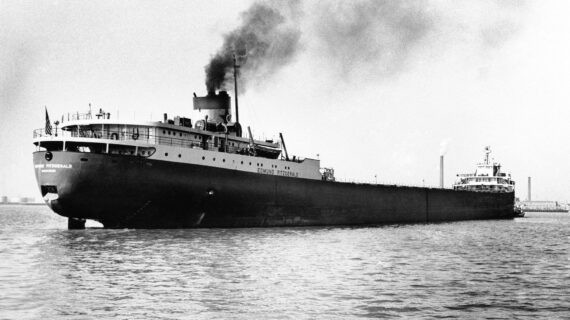


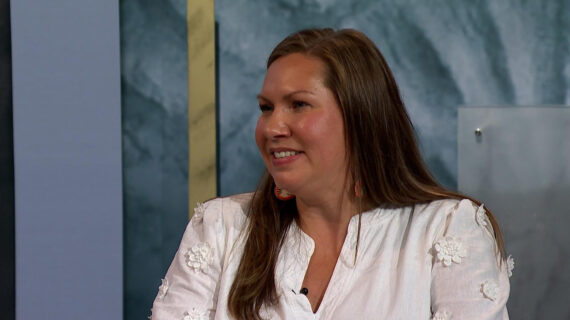
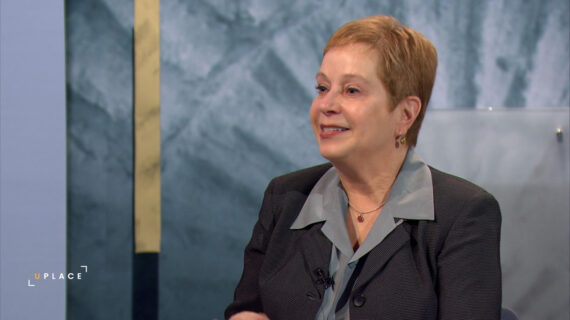
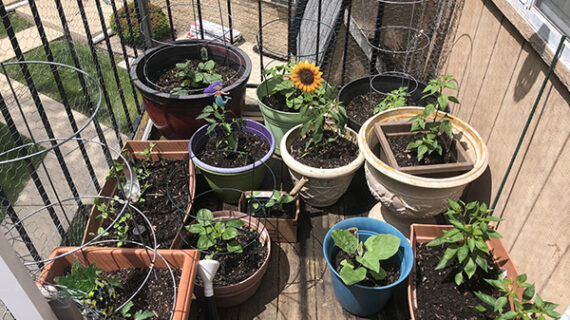
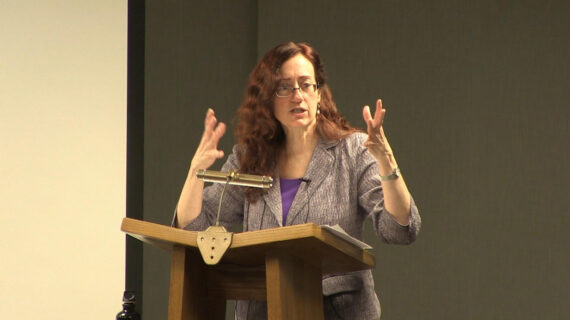
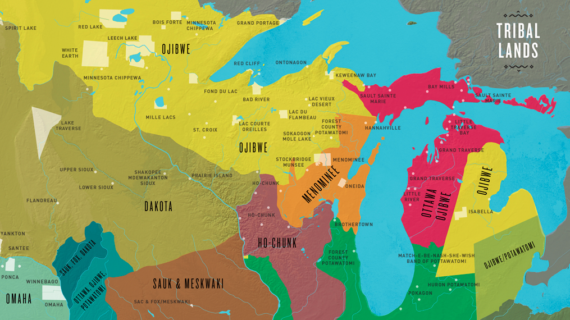
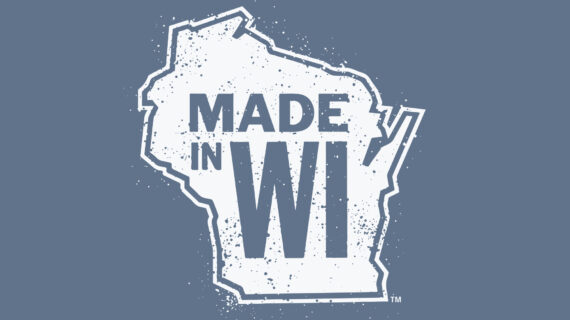
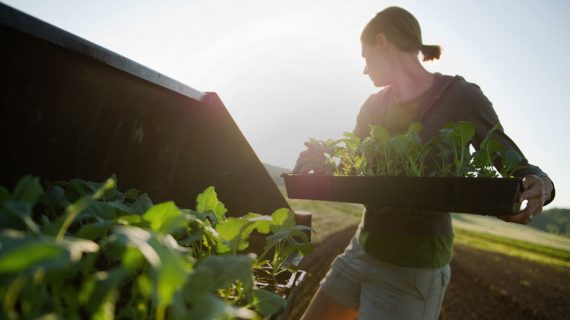
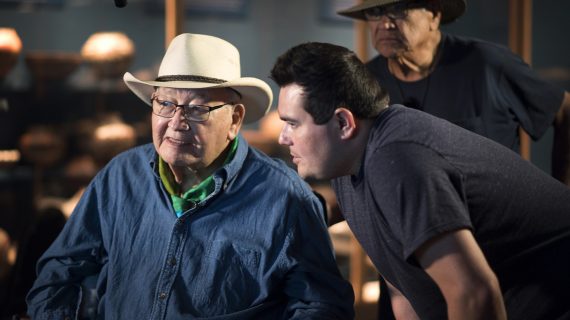


Follow Us